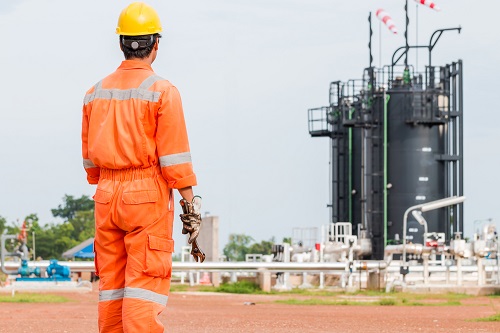
The Bureau of Labor Statistics reported 134 deaths nationwide in the oil and gas extraction industry from 2011 to 2020. Among the many risks these workers face is exposure to hydrocarbon gases and vapors (HGVs) when manually opening storage tank hatches to measure or collect samples. This process, known as “thiefing a tank,” can expose workers to HGVs and oxygen-deficit atmospheres that can have immediate health effects on their eyes, lungs, and central nervous system. It can also cause abnormal heart rhythms, dizziness, disorientation, unconsciousness, and sudden death. These tips can help employers and workers reduce their exposure to HGVs and save lives.
1 Control the hazards.
Engineering controls are the most effective way to protect workers. Lower workers’ exposure to HGVs by using remote or automated tank gauging systems to wirelessly let workers know how full the tank is. Exiting tanks can also be retrofitted with sampling ports or taps to replace manual thiefing.
2 Create a respiratory protection program.
Create a program that includes how to: choose respirators; conduct medical evaluations for employees who use respirators; and fit-test, clean, maintain, repair, store, discard, and use respirators in both routine situations and emergencies.
3 Choose the right respirator.
Unless exposure assessments show otherwise, use only supplied-air respirators or a self-contained breathing apparatus when working around open thief hatches. Half-mask, full-face, and powered air-purifying systems with organic paper cartridges will NOT protect workers from exposure to HGVs and oxygen-deficient atmospheres.
4 Develop an emergency action plan.
Have a written worksite emergency action plan and practice procedures often.
5 Train employees to do the work safely.
Conduct a hazard assessment and communicate the findings in a way that both workers and contractors understand. Post signs to remind employees of their training and help them understand how to have a safe worksite.
For more tips on oil and gas extraction safety, contact a DWC safety training instructor at 1-800-242-7031, Option 2, or review the following:
- NIOSH-OSHA Hazard Alert
“Health and Safety Risks for Workers Involved in Manual Tank Gauging and Sampling at Oil and Gas Extraction Sites.” - OSHA National Steps Alliance
“Tank Hazard Alert.” - Centers for Disease Control and Prevention
“Protecting Oil and Gas Workers from Hydrocarbon Gases and Vapors.”
- American Petroleum Institute
“Hazard Recognition & Communication.”
